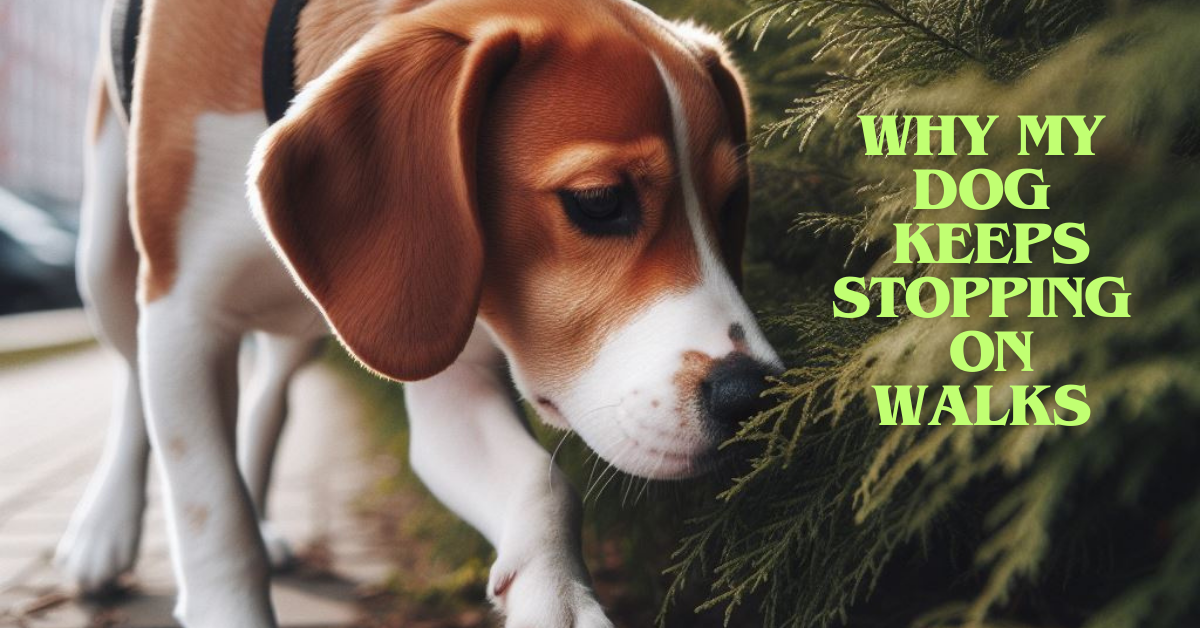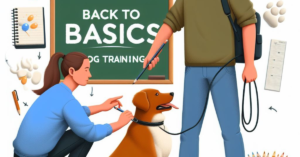Introduction
Walking your dog is supposed to be a pleasant and invigorating experience for both you and your furry friend. But what happens when your dog keeps stopping on walks? Forcing you to come to a halt every few feet? It can be frustrating, time-consuming, and even embarrassing. Whether it’s sniffing every lamppost, chasing after squirrels, or simply refusing to move forward, this behavior can turn an enjoyable stroll into a never-ending adventure. In this article, we will delve into the reasons why dogs exhibit this stopping behavior on walks and provide effective strategies to help you overcome this obstacle. So grab the leash and get ready to discover how to regain control of those walkies!
6 Common issue of dogs stopping on walks and possible solutions
Physical discomfort or fatigue:
Dogs, like humans, can experience physical discomfort or fatigue during walks. If your dog is not used to long walks, or if they have any underlying health issues such as joint pain or muscle soreness, they may stop frequently to rest or alleviate discomfort.
Possible Solutions:
Take your dog to the veterinarian for a check-up to rule out any underlying health issues. If your dog is healthy, gradually increase the duration and intensity of walks to build up their endurance. Consider shorter, more frequent walks, especially if your dog is older or less active. Additionally, provide a comfortable and properly fitting harness or collar to reduce strain on their neck and body.
Exploration and curiosity:
Dogs are naturally curious creatures, and they may stop frequently during walks to investigate interesting scents, sights, or sounds in their environment. This behavior is particularly common in areas with a high concentration of smells, such as parks or areas frequented by other animals.
Possible Solution:
Allow your dog some time to sniff and explore during walks, but set limits on how long they can stop at each spot. Use verbal cues or gentle leash guidance to encourage them to continue walking after a brief investigation. Incorporate training exercises into your walks to redirect their focus and reinforce desired behaviors, such as “heel” or “leave it.”

Training or obedience issues:
If your dog has not been properly trained to walk on a leash or follow commands, they may stop frequently due to distractions or a lack of understanding about what is expected of them during walks. Training sessions focused on leash manners and obedience can help address this issue.
Possible Solution:
Enroll your dog in obedience classes or work with a professional dog trainer to improve leash manners and obedience. Practice leash walking and basic commands in controlled environments before gradually introducing distractions. Use positive reinforcement techniques, such as treats and praise, to reward your dog for walking nicely on the leash and following commands.
Fear or anxiety:
Dogs may stop during walks if they encounter something that triggers fear or anxiety, such as loud noises, unfamiliar objects, or other dogs. Understanding your dog’s triggers and providing positive reinforcement and reassurance can help reduce anxiety and encourage them to continue walking.
Possible Solution:
Identify your dog’s triggers and gradually desensitize them to these stimuli through counterconditioning and positive reinforcement training. Create positive associations with previously fearful objects or situations by pairing them with treats, toys, or praise. Provide reassurance and stay calm during walks to help your dog feel safe and secure. If necessary, use tools such as a Thundershirt or calming supplements under the guidance of a veterinarian.
Overstimulation:
In some cases, dogs may become overstimulated during walks, especially if they are in busy or crowded environments. Overstimulation can lead to sensory overload, causing dogs to stop and seek relief from the overwhelming stimuli. Taking breaks in quieter areas or adjusting the route to avoid overly stimulating environments can help alleviate this issue.
Possible Solution:
Choose walking routes that are less crowded or noisy to minimize sensory overload. Take frequent breaks in quiet areas to allow your dog to relax and decompress. Use calming techniques, such as deep breathing exercises or gentle massage, to help your dog stay calm during walks. Gradually expose your dog to busier environments over time, using positive reinforcement to encourage calm behavior in the face of distractions.
Things to Consider
Observing your dog’s behavior closely and considering these potential reasons can help you better understand why they are stopping during walks and address any underlying issues effectively. If the behavior persists or if you have concerns about your dog’s health or well-being, consulting with a veterinarian or professional dog trainer may be beneficial.
Consistency, patience, and positive reinforcement are key when addressing your dog’s behavior during walks. Tailor your approach based on your dog’s individual needs and preferences, and don’t hesitate to seek guidance from a professional trainer or behaviorist if needed.
Final Thoughts
Understanding why your dog keeps stopping during walks is crucial for addressing the underlying issues and ensuring enjoyable and stress-free outings for both you and your furry companion. Whether it’s physical discomfort, curiosity, training challenges, fear, or overstimulation, there are solutions available to help improve your dog’s walking experience.
By identifying the root cause and implementing targeted strategies, such as gradual conditioning, positive reinforcement training, and environmental management, you can help your dog overcome obstacles and develop better leash manners and confidence during walks.
Remember to be patient, consistent, and empathetic in your approach, and always prioritize your dog’s well-being and comfort. With time, effort, and understanding, you can create enjoyable walking experiences that strengthen the bond between you and your canine companion.




